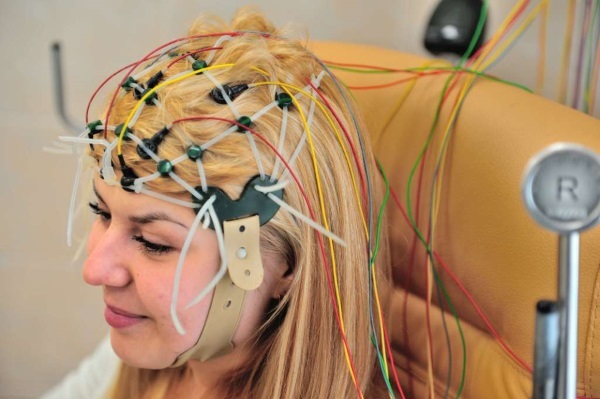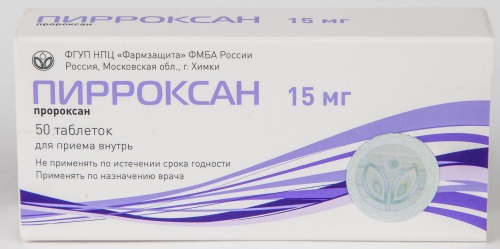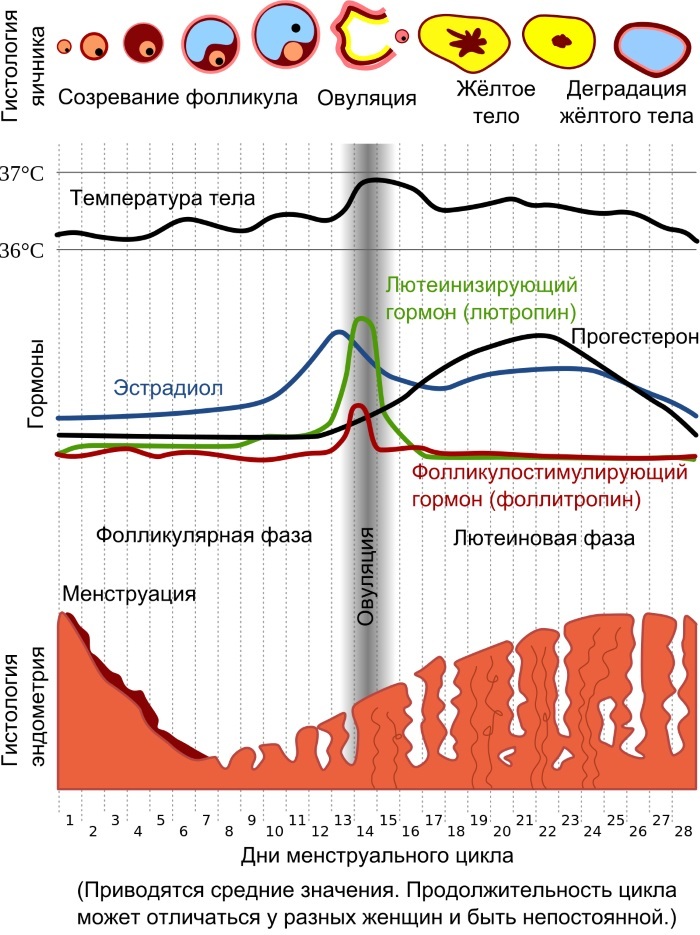In case of violation of thermoregulation the body, there are sharp changes in the temperature of the human body. In this case, the indicators can be higher than the normal value (36.6 ° C) or, conversely, lower (this happens much less often).
The symptoms of such a deviation in adults and children are similar. The reasons for the development of this condition may be different, but most of them affect bioenergetic processes. This condition can last for weeks or even months if treatment is not taken.
Record content:
- 1 Thermoregulation phases
- 2 Stages and degrees
- 3 Symptoms
- 4 Reasons for the appearance
- 5 Diagnostics
- 6 When to see a doctor
-
7 Treatment methods
- 7.1 Medications
- 7.2 Treatment of children
- 7.3 Folk methods
- 7.4 Other methods
- 8 Possible complications
- 9 Thermoregulation video
Thermoregulation phases
There are 2 phases of this process:
- Chemical. In a normal state, thermoregulation is carried out due to local and general metabolic processes that lead to an increase in heat production.
-
Physical. In this phase, the convention (heat conduction) and heat study take place. Also, water evaporates from the surface of the skin and mucous membranes.

The main role in the process of thermoregulation is played by the sweating system and mechanisms of the vasomotor type. Every human body has peripheral and central systems responsible for thermal susceptibility.
In the first case, we are talking about the nerve receptors of the skin, as well as subcutaneous adipose tissue. The skin is the main regulator of temperature. Hemodynamics also plays an important role. It is a mechanism that provides the right temperature for metabolism.
The hypothalamus also takes part in the process of thermoregulation. That is, a signal about temperature changes in the human body is transmitted to the central nervous system (CNS).
Stages and degrees
Violation of the body's thermoregulation (symptoms in adults may appear for several hours or longer) characterized by three stages of development:
-
Hypothermia. In this case, heat transfer increases in the human body. In some cases, the body temperature can drop 25 ° C below normal, but, as a rule, it reaches 32 ° C. At the same time, the patient experiences severe drowsiness, is poorly oriented in space, and breathes rapidly. Shivering in the body is also a characteristic symptom of this condition. The person becomes very apathetic and unable to assess what exactly is happening to him.

-
Hyperthermia. In simple terms, we are talking about overheating. With hyperthermia, the thermal balance fails. Heat generation exceeds heat transfer, which provokes an increase in body temperature up to 43 ° C. The skin turns red and becomes hot (with the exception of white hyperthermia, when the skin, on the contrary, turns pale due to the increased tone of the sympathetic nervous system). Also, patients complain of rapid or shallow breathing, fast heartbeat, headaches and intense thirst. With a strong increase in temperature, a person begins to delirium, he may lose consciousness. Convulsions are a characteristic sign of hyperthermia.

- Fever. In this case, normal heat exchange is maintained, but the body temperature rises. There are three stages of fever. At first, the temperature rises gradually or very quickly to 38 ° C (subfebrile value), 38-39 ° C (febrile value), 41 ° C (high value), or more than 41 ° C (hyperpyretic value). The second stage of a febrile state is characterized by the fact that the temperature lasts from several hours to several days (in difficult situations, this condition can last weeks or even months). After this comes the third stage. At this stage, there is a sharp decrease in temperature (this condition is usually called a crisis) or, conversely, a slow decrease in the temperature regime (lysis). With fever, patients complain of joint aches, increased drowsiness, migraines, and a complete lack of appetite.
In addition, there is such a thing as chill-like hyperkinesis. This condition is characterized by the sudden appearance of chills, which is accompanied by the effect of "goose bumps" and internal tension. Often this condition indicates a vegetative crisis.
This happens against the background of increased heat production of the physiological type. Chills appear due to the transmission of the so-called efferent stimuli, which are formed in the posterior hypothalamus and are sent to the human spinal cord.
Chills can also occur against the background of a developing infection. With a febrile chill, a person's body temperature rises by no more than 3-4 ° C. This can also happen under stress.
This results in the release of substances called catecholamines. Additional symptoms of this form of impaired heat transfer include a constant feeling of anxiety, depressive disorders. A person's blood pressure rises, tachycardia may develop. The skin is pale.
Also exogenous and endogenous disorders of heat transfer are distinguished. In the first case, the temperature change occurs against the background of the influence of the environment. For example, if a person is simply dressed inappropriately or has been influenced by chemical or radiation factors.
Endogenous disorders are characterized by various pathologies that affect the water-electrolyte balance. There is also a change in the blood circulation process. Also endogenous disorders include endocrine pathologies and inflammatory processes.
If, in the course of a change in the temperature regime of the body, a so-called temperature curve is distinguished during the day.
Symptoms
Violation of the body's thermoregulation (symptoms in adults may be weak or, conversely, the condition may reach critical level) is often characterized by an increase in temperature, which can occur gradually or in the form of sharp jumps and last for several hours.
Previously, a person may complain of aching joints and muscles, chills. The skin becomes either too cold and pale, and then reddens and becomes hot. The feeling of chills is replaced by a feeling of intense heat. Lips dry out and chapped.
In children under the age of 1 year, thermoregulation processes have not yet been debugged, therefore, a temperature raised to 37.5 ° C is not a sign of a violation of heat exchange processes.
If unreasonable jumps occur at an older age, then additional symptoms may be blurred, therefore, the only way to determine if a child has a problem is to measure the temperature with thermometer.
Reasons for the appearance
There are several main reasons for the violation of thermoregulation:
| Cause | Peculiarities |
| Damage to the hypothalamus | The cause can be congenital or acquired. Among the additional symptoms, one can single out a violation of the digestive, respiratory and other functions. In the acute phase, problems also appear in the cardiovascular system. |
| Acclimatization | Thermoregulation disorders are caused by changes in temperature and humidity in the environment. In this case, temperature failures occur regularly. |
| Alcoholism | Excessive alcohol consumption causes an increase in temperature. Symptoms disappear if you completely abandon alcoholic beverages. |
| Physiological aging | In the process of aging, the temperature rate may slightly change up or down. |
| Mental illness | Violation of thermoregulation occurs against the background of psychiatric disorders. |
| Vegetovascular dystonia | This is a whole complex of symptoms that is treated with an extremely complex method. |
There are several more factors that can provoke a change in the balance of heat transfer and heat production.
These include:
- Physical exercise. As a rule, the temperature returns to normal within a few hours after increased exertion.
- Taking medications. Some drugs can affect the functioning of the autonomic system.
- Strong nervous tension.
- Obesity, thyrotoxicosis and other diseases of the endocrine system.
The reasons for this deviation may be associated with a specific form of violation:
- Hypothermia most often develops against the background of severe hypothermia in winter. With this form of deviation, there are accompanying factors. These include not only improperly selected clothes, but also age, alcohol intoxication. Hypothermia occurs if a person has been in cold water for a long time (for example, fell into an ice hole). Also, a similar condition is characteristic of pathological diseases. For example, a decrease in temperature occurs with hypothyroidism, hypoglycemia, myocardial infarction. This condition is typical for patients who suffer from respiratory failure in the acute stage, large blood loss, heart failure.
- A febrile condition usually develops with a variety of diseases, usually of an infectious type. They can be caused by a virus, bacteria, fungus or helminths. Sometimes the fever becomes a reaction to the infusion of certain drugs. In this case, a strong increase in temperature becomes a consequence of the fact that pyrogens enter the blood. These are special substances that will release pathogenic microbes. They can also form due to damage to body tissues.
In women, a slight increase in temperature is considered normal if she is carrying a baby or she is menstruating. In this case, a violation of thermoregulation becomes a consequence of a change in the hormonal background. Also, a similar condition often occurs with tuberculosis or hepatitis.
Diagnostics
A violation of the body's thermoregulation may indicate serious problems or not have a strong effect on the human condition. If symptoms are found in adults and children, it is worth undergoing diagnostic measures that will reveal the exact cause of the temperature deviation from the norm.
In order to make a correct diagnosis, the doctor must exclude typical changes in temperature indicators. It is possible that the patient is suffering from a chronic illness (such as tonsillitis or otitis media).
First of all, the doctor must diagnose the autonomic system, as well as the brain.
To do this, run:
- MRI. With the help of magnetic resonance imaging, you can get an extremely clear image of the area you want to explore.
-
Electroencephalography. This is a research method used in psychiatry. Using electroencephalography, the doctor evaluates how well the patient's brain is functioning. This study reveals some psychiatric disorders.

The so-called vegetative tone is also assessed. The doctor collects a large amount of data, fills in charts and a patient questionnaire. There he registers all changes in vegetative indicators.
Additionally, you need to investigate autonomic reactivity. There are two methods of performing this diagnostic measure: pharmacological and physical. In the first case, histamine, adrenaline or insulin is administered to the patient and the reaction of the body is monitored. In the physical examination, heat and cold tests are carried out. After that, the doctor calculates the degree of reactivity of the autonomic system.
For diagnostic measures, you can contact a district or private clinic. In the first case, the examination is carried out free of charge (based on a medical policy). When contacting a private clinic, the cost of an appointment with a doctor will cost from 800 to 2500 rubles. Diagnostic measures are carried out for a fee.
When to see a doctor
To diagnose and treat such a failure, you must first contact a therapist, and then visit a neurologist, ENT doctor and other specialists recommended by the attending physician.
It is worth visiting the clinic if there is a prolonged increase in temperature, even if it is insignificant. In the event of a sharp jump to critical values, an ambulance must be called.
If the reason for the increase in temperature was heatstroke, then before the arrival of the team of doctors it is necessary:
- First, lay the victim on a flat surface in a cool place. At the same time, his legs and head should be raised to ensure good blood flow and prevent oxygen starvation.
- If a person has lost consciousness, then it is necessary to try to bring him to his senses. To do this, you need to bring a cotton swab dipped in ammonia to his nose, slap him in the face or sprinkle cold water on his face.
- After that, you need to remove clothes from him, which blocks the flow of blood and does not allow him to move freely.
- The next step is to provide him with air flow. To do this, you need to put a fan next to the victim or open the window completely.
- As soon as a person comes to his senses a little, he needs water.
Before the arrival of an ambulance, it is recommended to make him cold compresses, which are placed on his forehead.
Urgent care is also required in cases of severe hypothermia. If a person has been in the cold for a long time, and his body temperature has dropped, then this condition can be life-threatening.
In case of hypothermia, it is necessary to increase the body temperature of the victim. To do this, it is best to put it in a warm bath. You can't do hot water right away. The optimum rise should be gradual from 30 ° C to 40 ° C. This procedure must be continued until the victim's body temperature rises to 33-35 ° C.
His blood pressure should be checked periodically. Before the arrival of the ambulance, the victim should be in a warm visit. He should be dressed in dry clothes and wrapped in a blanket.
If the body temperature drops below 32 ° C, then an ambulance must be called. Only primary measures can be taken independently. If a person does not stop trembling and there is heavy breathing, then there is a risk of arrhythmia. At a body temperature below 27 ° C, a person falls into a coma.
Treatment methods
Violation of the body's thermoregulation (symptoms in adults may indicate the presence of VSD) often occurs against the background of mental disorders and with damage to the hypothalamus. There are several treatment options for these abnormalities.
If the changes in thermoregulation are insignificant, then the doctor recommends strengthening the body's defense system. This means that you need to go outside for at least 30 minutes once a day. It is important to lead a healthy lifestyle, exercise and give preference to a balanced diet. It is important to avoid stressful situations and sleep well.
There are also medical methods for treating such a deviation.
Medications
If the patient suffers from hyperthermic disorder, then therapy should be carried out on the basis that this deviation is most likely a consequence of autonomic dysfunction. In this case, the doctor may prescribe drugs that reduce adrenergic activation. Such funds are capable of influencing the central and peripheral nervous system.
The drug Reserpine is highly effective. It needs to be taken at 0.1 mg twice a day. The course of treatment is usually a week, but if there is no visible effect, the doctor may extend the treatment. When the condition stabilizes, the dosage is gradually reduced. After a few months, the temperature regime is fully restored. The drug costs about 250 rubles.
Also, the doctor may prescribe Pirroxan. It must be taken 15-30 mg three times a day. The duration of the course of treatment is determined by the doctor. This drug belongs to the category of alpha-blockers.
To enhance heat transfer due to the expansion of the vessels of the skin, no-shpa, nicotinic acid or similar agents are prescribed. If problems arise against the background of serious mental disorders, then the doctor may prescribe antidepressants or even a tranquilizer. In a mild form of the disorder, you can limit yourself to mild sedatives or sedatives. For the treatment of psychosis, it is necessary to undergo treatment with antipsychotics. They also help with persistent chills.
Most of the drugs used to restore normal body temperature are potent, so they are only sold with a doctor's prescription. Only a specialist can choose the optimal dosage and determine the duration of the course of treatment. Most often, complex treatment is carried out.
Treatment of children
In children, a change in constant temperature most often occurs against the background of vegetative vascular dystonia. In this case, the doctor first prefers to conduct a gentle treatment, which basically boils down to changing the child's lifestyle. For example, parents should limit the time they watch TV, make sure that the child does not spend a lot at the computer.
Also, strong psychological pressure should not be exerted on the child. Massage therapy or electrophoresis can help children.
Folk methods
Traditional medicine can have a calming effect, so its use is allowed, but only if it does not interfere with the therapy already prescribed by the doctor.
If a person suffers from low blood pressure, then it is recommended to prepare herbal preparations for him. The best is the combination of echinacea (flowers), hop cones and pink rhodiola root. All components must be mixed in equal proportions. After that, pour one spoonful of the collection with a glass of boiling water and leave for about 15 minutes.
Additionally, a spoonful of natural honey can be added to the cooled infusion. 250 ml of this herbal infusion should be divided into 3 parts and drunk during the day. Such treatment will not only improve the state of the body's protective functions, but also allow better adaptation to stressful situations.
There is another effective remedy that has a calming effect. This is a good folk method for treating VSD. To prepare the medicine, mix in equal parts mint (leaves), lemon balm, finely chopped hawthorn berries and hop cones.
Also, it is necessary to add dried valerian root to this collection. 1 tbsp. l. the resulting composition must be poured with a glass of boiling water and kept in a water bath for about 20 minutes. The resulting infusion should be taken 100 g daily before each meal.
Other methods
Violation of the body's thermoregulation (symptoms in adults are more pronounced) disappears if efforts are made to strengthen the body in general.
The most effective methods are:
-
Cold and hot shower. This is the hardening option, which is considered the most affordable and simplest. To perform a wellness procedure, it is necessary to warm up well under a hot shower and switch it abruptly to the cold water supply mode. In this state, you need to hold out for 1 minute, after which you can turn on hot water again. It is necessary to finish the procedure with cold water. Gradually, the body will get used to such activities. Then you can complicate the task and stay under cold water for 3-5 minutes.

- Sauna or bath. This is the best way to balance your body temperature. Thanks to this forced heating, the pores of the skin are cleared, which helps to improve health.
Possible complications
If a person suffers from a slight increase in temperature, then this cannot greatly harm his health. However, if the constant temperature rises more significantly, it is worth treating. With VSD and other disorders, the situation will only get worse over the years. This can provoke more complex conditions of the nervous system.
In case of hypothermia, it is imperative to take measures, since otherwise there is a risk of death or that the victim will fall into a coma.
In case of violation of the body's thermoregulation, a negative effect is exerted on many systems and organs. Therefore, when the first symptoms of such a deviation appear in adults or children, it is worth undergoing a general examination and contacting a neurologist.
Thermoregulation video
Symptoms and treatment of thermoneurosis:



